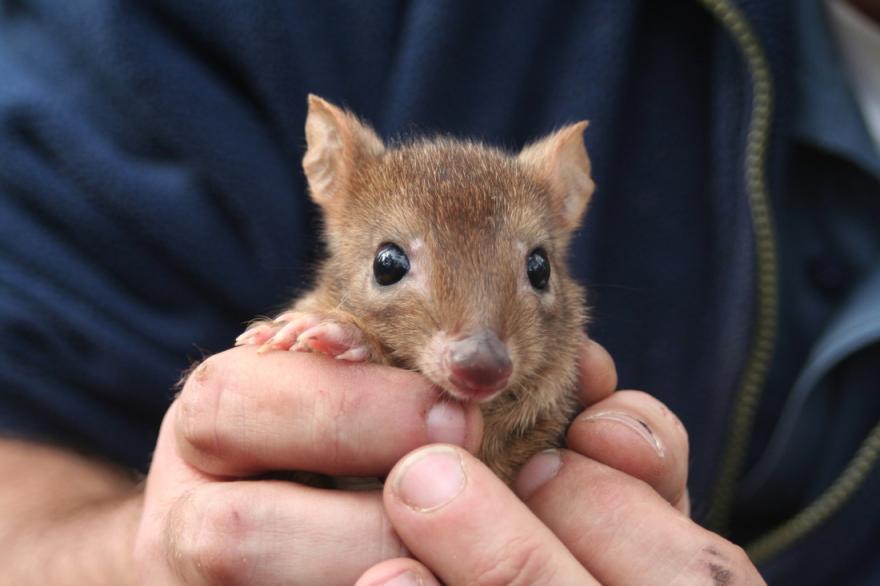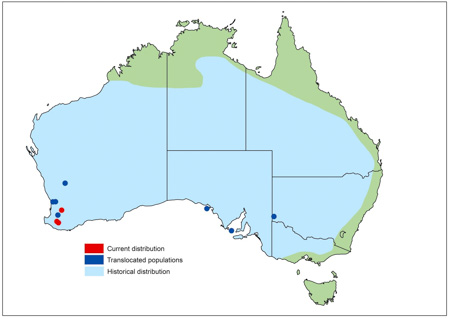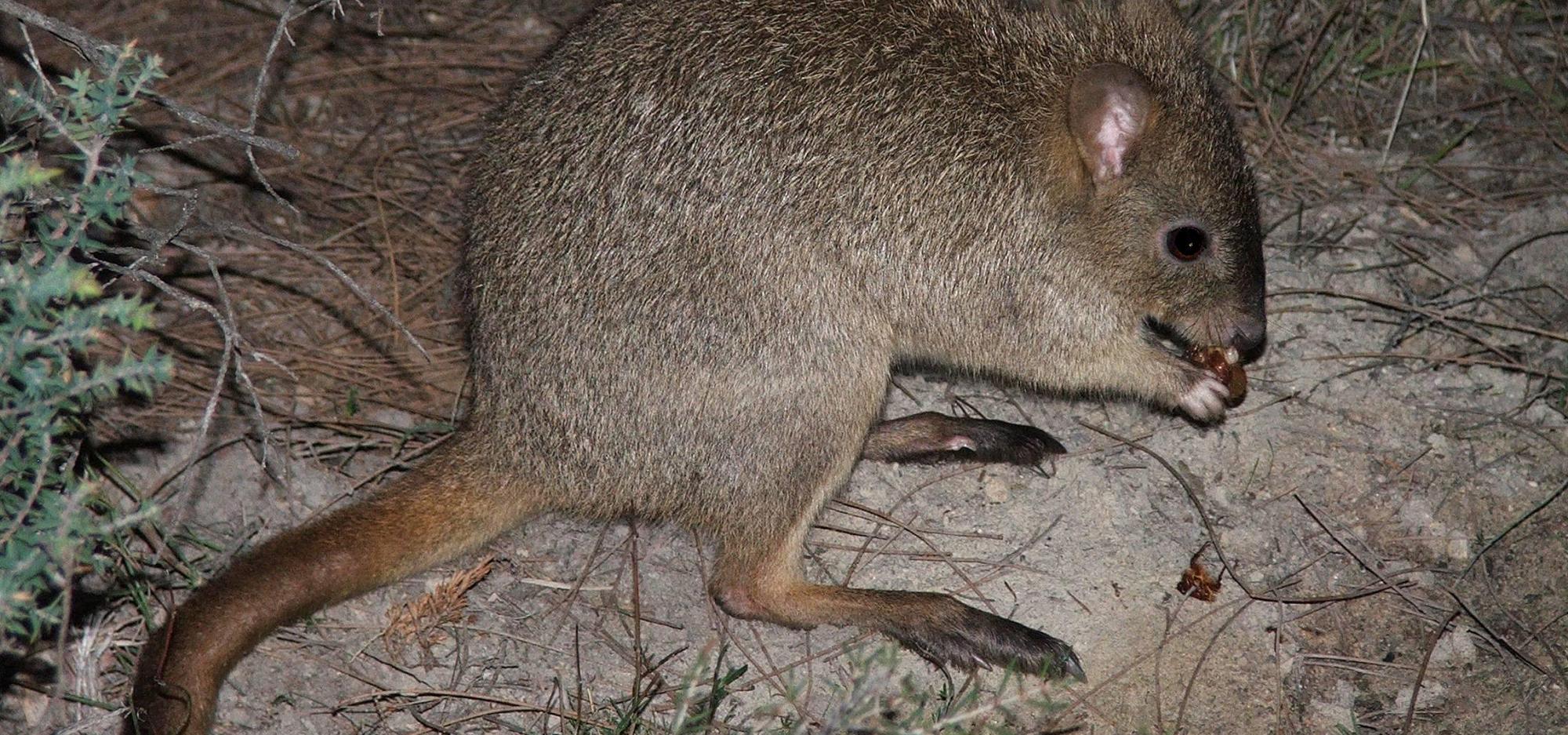
Nyoongar Name: Woylie
Scientific Name: Bettongia penicillata
Common Name: Woylie or Brush-tailed Bettong
Conservation status: Critically Endangered. This means a species has an extremely high chance of dying out or becoming extinct in the future.
Fun facts
- Woylies are a small, nocturnal, kangaroo-like marsupial with a long tail with a black brushy tip to it. The tail is prehensile meaning they can use it like an extra limb to pick up and carry objects like grass and branches to help build their nests.
- They are very good diggers using their strong claws to dig up fungi and roots. Woylies are important ‘ecosystem engineers’ because their digging and foraging helps to spread seeds and fungal spores creating a healthy ecosystem.
- Woylies have a well-developed sense of smell and communicate with each other using scent from their urine and faeces (poo) and also by rubbing scent glands on their body.
- They have strong legs and can jump really high if threatened or startled.
- Young woylies are called joeys and stay in their mothers' pouch for around 3–4 months. They only have one young at a time but the young grow so quickly that they can have three babies in a year. The average life span for a Woylie is 6–8 years.
Not So Fun Facts
Woylies once inhabited more than 60% of mainland Australia, ranging from Western Australia, Northern Territory, South Australia, Victoria and New South Wales. Over the past 150 years, it has been completely exterminated (got rid of) from almost all its historical range.
Now, they can only be found in small pockets in Western Australia and offshore islands in South Australia.
The woylie was once abundant throughout Perth, but due to predation by foxes and cats, and habitat destruction, they are confined to a few fenced reserves.
Female woylies are known to eject any young joeys from their pouch when they are stressed. This isn’t good news for the joey as they are unlikely to survive outside of the pouch!
Threats to their survival
Introduced predators, including foxes and feral cats, are a great threat to woylies.
Habitat destruction is also a major threat to their survival.
In the past, extensive land clearing for agriculture led to the loss of many woylies and other species of bettongs. They were killed as agricultural pests or for the fur trade in the early 20th century.
In Western Australia, woylies increased in distribution and numbers following effective fox-baiting during the 1980s. However, most populations have declined again – most likely due to predation by feral cats, although research is also being done to see if disease is playing a part in their declining numbers.
Find me in the wild

A map of the historical distribution of the woylie, and the locations where the woylie is currently known from, including translocated populations. (DBCA, 2017).
Find me at the Museum
You can find me in the Woodland Wonders section within the Wild Life Gallery on Level 3 of WA Museum Boola Bardip.
Image credits:
Header image courtesy of the Department of Biodiversity, Conservation and Attractions.
Photograph in text: Woylie (brush-tailed bettong, Bettongia ogilbyi) in hands. Upper Warren, Western Australia © Sabrina Trocini / WWF-Aus. Map courtesy of the Department of Biodiversity, Conservation and Attractions.
